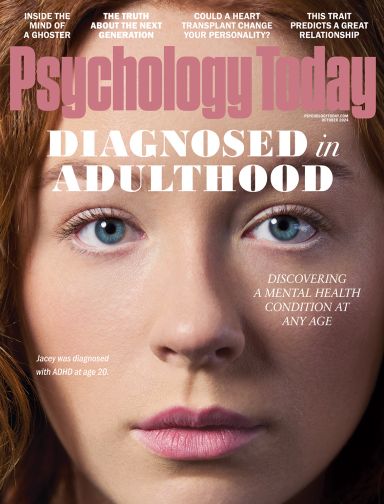Resilience
5 Steps to Greater Resilience Today
Finding new hope for the holidays and the new year.
Posted December 16, 2021 Reviewed by Lybi Ma
Key points
- Stop rushing. It puts our bodies under chronic stress, shutting down our immune systems and higher brain functions.
- Eliminate the energy drains that drag us down; these can be internal or external.
- Cultivate positive habits that build greater resilience in our lives.

Each December brings us colorful decorations, celebrations, nostalgia, and stress as we rush to buy presents, decorate our homes, and celebrate the holidays. This year the tinsel and colored lights are joined by supply chain delays, divisive politics, economic uncertainty, new Covid-19 variants, and recurrent anxiety. What can we do to create a season of peace and goodwill?
Here are five steps that can help us build greater hope for the holiday season and throughout the new year. Bringing greater light to our days, these five steps spell “SHINE.”
S-Stress Skills. First, we need to stop rushing. Rushing puts our bodies under chronic stress, shutting down our immune system and higher brain functions. Meditation teacher Eknath Easwaran called our fast-paced life “the hurry sickness” (Easwaran, 2016) a frantic pace that only increases during the holidays. To regain a more centered and coherent state when you catch yourself rushing, pause, focus on your heart, and take a few slow mindful breaths (Childre, Martin, Rozman, & McCraty, 2016). When you’re feeling stressed, give yourself a break—for example, exercise, connect with nature, talk to a friend, or listen to calming music.
H-Happiness Habits. Give yourself time to recharge your energies with habits that renew you. Think of ways you find renewal. Beginning your days with a positive morning routine? Eating healthy food? Getting regular exercise? Spending time with friends? Creating art? Playing a musical instrument? Whatever renews you, make it a regular habit in your life.
I- Inspired Action. This season, instead of mindlessly moving from one task to the next, set a positive intention for yourself. Think of a meaningful goal in one area of your life. Write down three simple steps to reach that goal with an alternate for each if that step doesn’t work out. Take a few moments to visualize yourself taking these steps, overcoming roadblocks with your alternative steps, and reaching your goal. Then maintain your motivation with positive self-talk, recalling past achievements and telling yourself, “I did that then and I can do this now” (Feldman & Dreher, 2012).
N-Networking for Hope. Reach out to connect in this season of goodwill. Expand your sense of community by practicing what psychologist Barbara Fredrickson (2013) calls “micro-moments of connectivity,” reaching out with a greeting or kind word to your neighbor, the grocery store clerk, or anyone else you meet in daily life. Share your goals, successes, and setbacks with supportive people who care about you. These can include your best friend, a trusted family member, supportive mentor, teacher, doctor, faith leader, counselor, or coach. Research has shown that simple acts of connection can dramatically improve the health of both giver and receiver, raising our mood, relieving stress, and reducing inflammation, creating a positive ripple effect to promote greater well-being for ourselves and our communities (Bertera, 2005; Fredrickson, 2013).
E- Eliminate Hope Challenges. What drains your energy and drags you down? Is it something external—excessive television, YouTube videos, social media, continual interruptions, a cluttered household, or a chronic complainer in your life? Or is it an internal habit—constant worry or an inner critic that tells you you’re “not good enough”? Either way, you can use your stress skills, happiness habits, and hopeful networking to shift your attention from the darkness to the light of greater hope.
Finally, you can pause to appreciate the gifts of this season. Take time to reflect on a thoughtful message from a friend, your favorite holiday music, the light in a loved one’s eyes, or the beauty of a winter sunset. Moments of appreciation and gratitude not only help us feel better in the moment but can progressively rewire our brains, forming new neural connections to create a brighter outlook for the new year (Emmons, 2007; Siegel, 2010).
__________
This post is for informational purposes and should not be a substitute for psychotherapy with a qualified professional.
References
Bertera, E. M. (2005). Mental health in US adults: The role of positive social support and social negativity in personal relationships. Journal of Social and Personal Relationships,22(1), 33-48.
Childre, D., Martin, H., Rozman, D., & McCraty, R. (2016). Heart intelligence. Waterfront Press.
Easwaran, E. (2016). Passage meditation. Tomales,CA: Blue Mountain Center of Meditation.
Emmons, R. A. (2007). Thanks! How practicing gratitude can make you happier. New York, NY: Houghton Mifflin.
Feldman, D. B. and Dreher, D. E. (2012). Can hope be changed in 90 minutes? Testing the efficacy of a single-session goal-pursuit intervention for college students. Journal of Happiness Studies, 13, 745-759.
Fredrickson, B. (2013). Love 2.0: How our supreme emotion affects everything we feel, think, do, and become. New York, NY: Hudson Street Press.
International Foundation for Research on Depression (iFred), (2021). Hopeful Mindsets Project. https://hopefulmindsets.com/about-hopeful-mindsets/
Siegel, D. J. (2010) Mindsight: The new science of personal transformation. New York, NY: Bantam.


